The Sacred Birman, also called Birman, is a gentle, affectionate, and very sociable cat. It is no coincidence that it is among the most popular cats in France. Like many cats, the Sacred Birman needs a suitable diet to stay healthy. To ensure it lives as long as possible by your side, it is especially important to provide food that supports its kidney function.
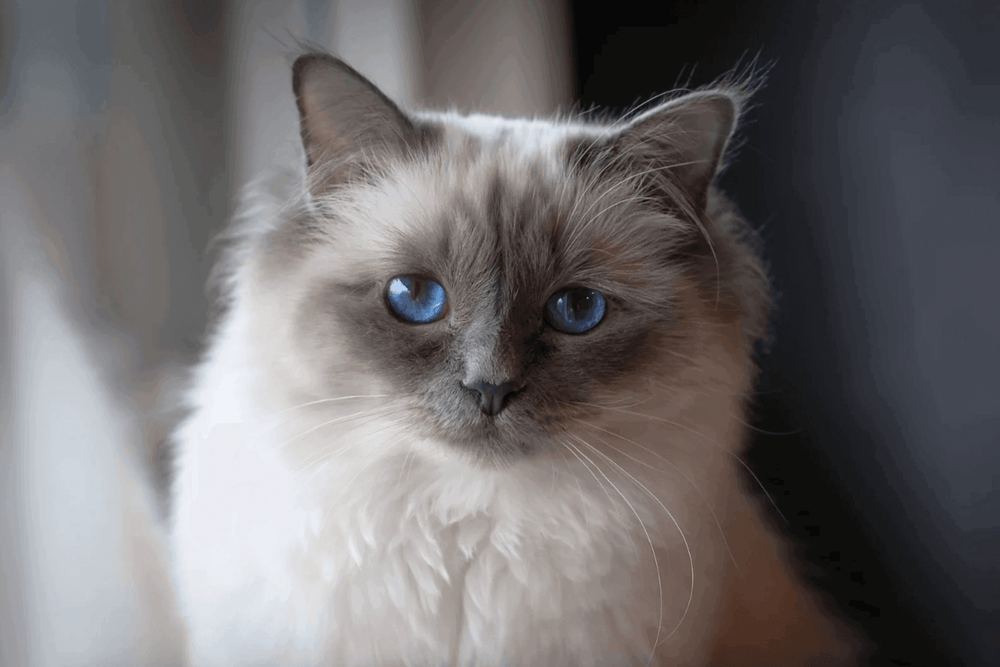
The Sacred Birman, a cat full of mysteries
A well-furred tail, intense blue eyes, silky fur, white gloves on its paws... The Birman is a cat of stunning beauty, whose origins are illustrated by a beautiful legend.
The story goes that a monk, living in a Khmer temple built in honor of a goddess with sapphire eyes, owned a white cat with yellow eyes named Sinh. He was praying with his little companion, when one night, looters murdered him. Sinh jumped on his master's head and begged the goddess to give him back his life.
She did not grant his dearest wish, but gave him a completely different appearance: his fur took on a golden hue and his eyes became blue. Only the tips of his paws remained white as a sign of purity. “The next day, all the cats in the temple had sapphire eyes, golden fur and feet of snow,” says the Official Book of Feline Origins ( LOOF ).
This story, which is attributed to the novelist Marcelle Adam, is false. It is only a legend. That said, we would like to believe it as it reflects the love and loyalty of our beloved cats.
Beyond the myth, the origins of the Sacred Birman cat are rather murky. It is said that a pair of Birman cats were stolen from a temple in Burma, and that they were brought to France on the yacht of an American billionaire. The breed was also developed in France, following the importation of two Birman cats in 1919, offered to Auguste Pavie, a French explorer, by Burmese priests. The Sacred Birman is also said to have been born from a cross in the south of France between a Persian and a Siamese with white paws. Unfortunately, nothing is certain.
The Birman cat, an ideal little companion
All we can say with certainty is that the breed was recognized in France in 1925. And that for 97 years now, it has made us happy. The Birman is also today the favorite cat of the French; it ranks in the Top of the most popular cats in France, with the Maine Coon , the Bengal and the Ragdoll or even the Persian cat . you are reading this article, it is because you probably have one at home. 😻
The Birman is an exceptional cat: known for its beauty - even Karl Lagerfeld made his “Choupette” a top model - the Birman cat is gentle, affectionate, calm and very sociable. It enjoys the company of humans as well as other animals. Having a very docile character , it is an excellent companion for the whole family. It is also a very playful cat. Just like the Bengal cat, it can be a real cat-dog. It can be satisfied with not much to play: a simple string or a ball of paper will make it happy.
The Birman is a real ball of love, sometimes maybe a little too clingy. He can follow you to the toilet. Nice for intimacy 😺
If you have adopted one, we imagine that it fills you with happiness. But like many parents, you must ask yourself many questions about its diet. How to properly feed your Sacred Birman cat? What diet should you choose? We understand. It's not easy to find your way around, and above all, to sort out the truth from the lies.
Although its origins are mysterious, its diet holds no secrets for us. We tell you everything in this article.
What food should I choose for my Sacred Birman cat?
Birman, Bengal, Maine Coon, Sphynx… Whatever their breed, all our cats are strict carnivores. That is to say, they cannot live and stay healthy without animal proteins in their food.
These proteins are absolutely essential, because they are the source of the 11 amino acids essential to their health: taurine, arginine, phenylalanine, methionine, valine, leucine, isoleucine, lysine, tryptophan, threonine and histidine. All these micronutrients contribute to the proper functioning of their body and their structure (bones, skin, hair).
They also need to find lipids (essential fatty acids), minerals (phosphorus, calcium, sodium, etc.), vitamins and a little fiber in their food for their intestinal transit.
Without all these nutrients, your Birman cat would become deficient and develop very serious health problems such as central retinal degeneration, neurological disorders, and impaired immune function.
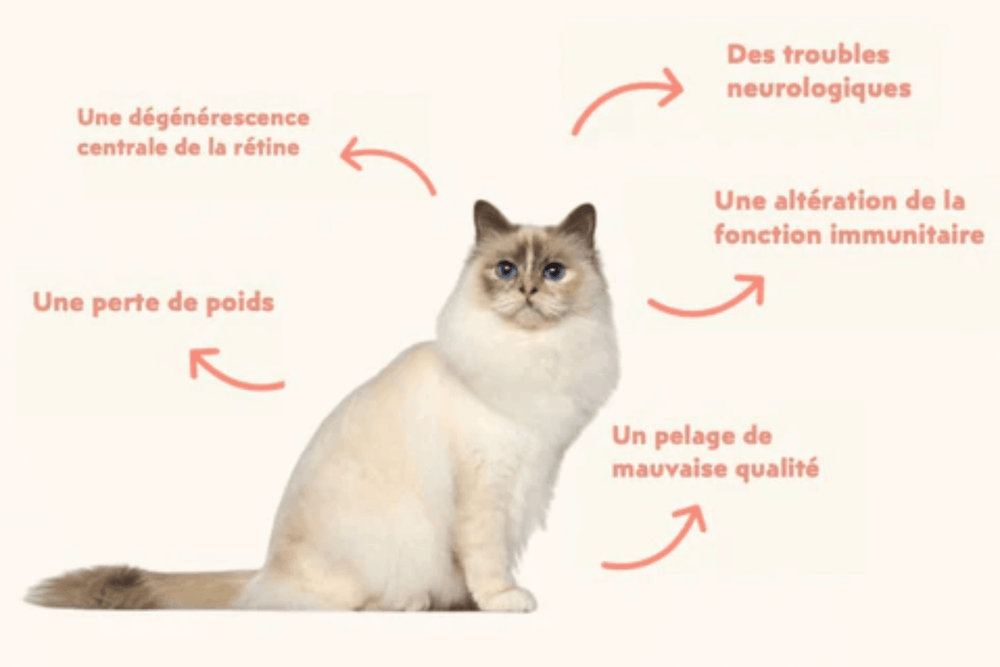
The Birman has the same nutritional needs as all other cats. However, there is one particularity: the Birman cat is predisposed to hereditary renal dysfunction . It is therefore necessary to ensure that it is given food that preserves its renal function.
Sacred Birman Cat: favor a wet diet
What is the kidneys' best friend? Water!
And what food provides the most water? Pate!
To preserve the kidneys of your Birman cat, we recommend that you give preference above all to pâté which, unlike kibble, is very rich in water. It allows for less concentrated urine.
Wet food not only prevents urinary disorders, but also the risk of obesity. Pate is four times less caloric, and thanks to its high moisture content, it brings volume to the stomach of our cats, thus contributing to the feeling of satiety.
Of course, you can give your Birman kibble, but these dry foods should remain a minority in his diet. You can offer your little cat a 100% wet bowl (exclusively pâté) or a mixed bowl (kibble and pâté).
As for the amount of pâté and kibble, it all depends on its size, weight, age and physical activity. A cat that is a bit of a couch potato will obviously need a little less kibble and pâté.
To easily and accurately determine the amount of food to give your cat, do not hesitate to use our personalized ration calculator.
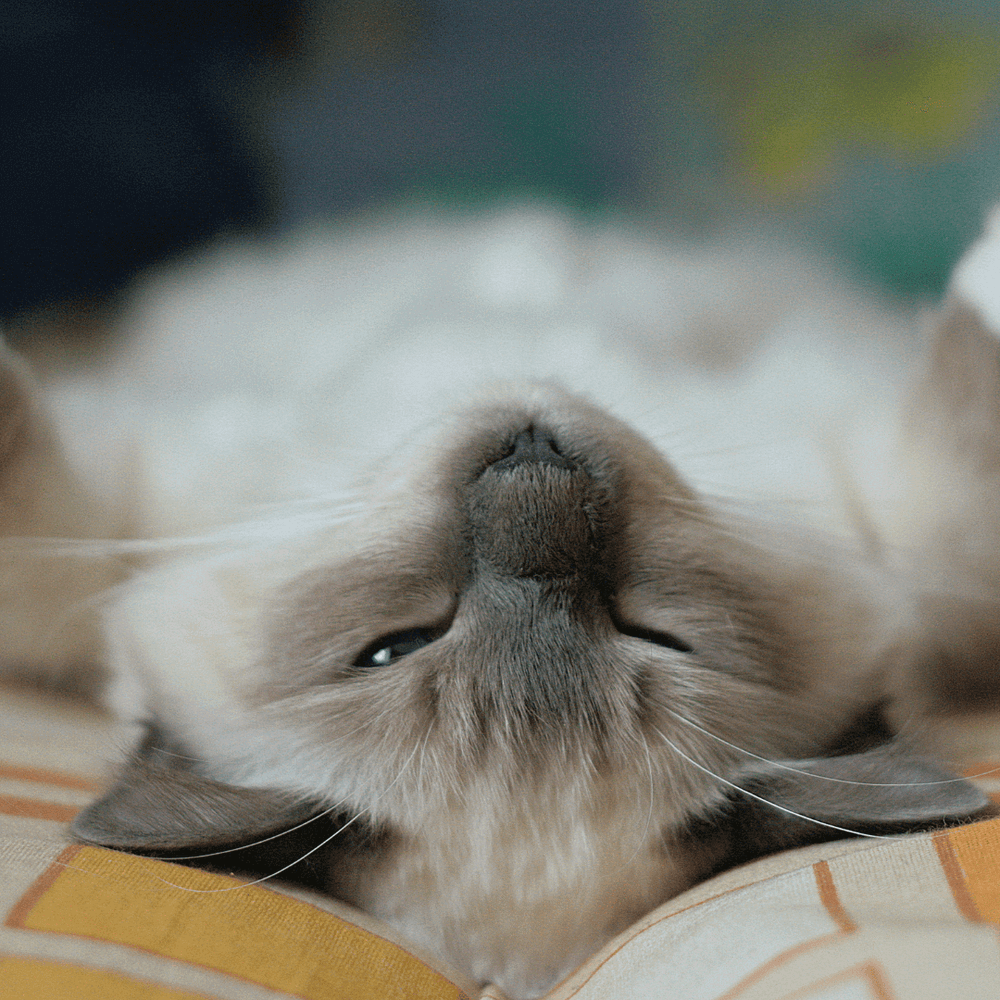
A diet low in phosphorus
Wet food is preferred, but beware of phosphorus! A food can be rich in water, but it can also be very bad for your cat's kidneys if it is too rich in phosphorus.
Phosphorus is an essential nutrient for cell growth and differentiation, energy metabolism, fatty acid transport, and amino acid and protein synthesis. Although essential, phosphorus should not be present in excessive amounts.
Several studies, including those of Böswald (2018) and Dobenecker (2018) , have shown that foods that are too rich in digestible phosphorus can have harmful consequences on the kidney function of our cats. Like urea, phosphorus is eliminated by the kidneys. The higher the quantity, the more these organs have to work to eliminate it.
Phosphorus is present in many food sources, especially in cereals and meat. But it is in carcasses (containing bone), cartilage and fish bones that it is found the most (as with calcium). And unfortunately, many manufacturers use these products to make their kibble and pâtés.
In particular, they use mechanically separated meat (MSM), a product “ obtained by the removal, using mechanical means, of meat, bones or poultry carcasses. Obtained after boning, this product may contain bone, cartilage or marrow residues, unlike ground meat or meat for minced meat ”.
How to choose the right kibble and pâté?
As explained above, phosphorus should not be banned from your Birman cat's diet. Phosphorus works in synergy with calcium (two inseparable nutrients). In the absence of phosphorus, calcium cannot be absorbed. Your Birman cat's food must therefore be balanced in calcium and phosphorus, with a sufficient quantity of each.
The most important thing to look at is the calcium-phosphorus ratio. On cat food labels, it is often listed as "Ca/P" . The ratio sought should be between 2 and 3 in case of renal insufficiency and between 1 and 2 in the absence of renal insufficiency.
Example of the Ca/P ratio of our Ziggy beef pâté.

If this ratio is not indicated on the packet of kibble and the can of pâté, simply do this little calculation: the calcium level divided by the phosphorus level.
0.2 / 0.13 = 1.5
That said, these indications are not mandatory. In the analytical constituents , manufacturers are legally required to mention only the rates of crude protein, crude fat, crude fiber, crude ash and moisture (for products containing more than 14% moisture). Some indicate the rates of calcium and phosphorus (like us at Ziggy) and others do not.
If the phosphorus content is not specified, there may be something fishy going on... In this case, you can look at the ash content (percentage of minerals present). If it is high, carcass has probably been added.
At Ziggy, all our cat food , which is also grain-free , is perfectly balanced in calcium and phosphorus. It is ideal for your Birman cat and all other cats, whether purebred or not.
If you suspect kidney failure in your cat , do not delay in consulting your veterinarian, who will be able to carry out in-depth examinations and prescribe an appropriate veterinary diet. Do not hesitate to consult our article on feeding cats with kidney failure.
A food rich in protein
Like all other cats, the Birman needs a diet rich in protein. An important clarification: contrary to popular belief , proteins are not the enemies of the kidneys if they are of good quality!
Many manufacturers advertise high protein content. Be careful though: quantity does not always mean quality.
In low-end industrial foods, there are no noble offal or real pieces of muscle. Instead, we find reconstituted meat (mixture of animal and vegetable proteins), animal meal or mechanically separated meat (MSM). Nothing very healthy for our little balls of fur.
These proteins do not provide much from a nutritional point of view, and above all, they can have effects on their already fragile health. When kitty consumes this type of protein, he will not use it for his metabolism. The unassimilated amino acids will be eliminated through the urine. In the long term, this will impact his kidney function...
Cat Food: What Are the Quality Proteins?
The quality of proteins depends on their ability to provide essential amino acids. A distinction is made between proteins with high biological value (quality) and those with low biological value (poor quality).
As explained in our article on proteins in your cat's diet , in feline nutrition, we base ourselves on the protein/phosphorus ratio . Fish, meat, eggs and offal have a high ratio (greater than 35). Conversely, cereals, carcasses and bones have a very low ratio (less than 25).
To find out if the proteins used in your cat's food are good quality, look again at the phosphorus level or crude ash level on the kibble bags and cans of pâté.
At Ziggy, we do not use MSM, reconstituted meat or animal flours in our delicious pâtés. Only real pieces of muscle and noble offal of great nutritional richness!
Not too high-calorie pâté and kibble
After sterilization and with age, the Birman (and all other cats) gains weight. For your Birman, you must therefore ensure that you offer him a low-calorie food, but which provides him with as much necessary protein.
Once again, pâté is the ideal solution: it is four times less caloric than kibble.
On the bags and boxes, another indicator can help you choose the best food for your Birman: the protein-calorie ratio (PCR) . This is the protein content of the food compared to its energy value. Ideally, a food for a sterilized cat should have a PCR greater than 100. Do not hesitate to consult our articles on feeding sterilized cats and older cats .
Low amount of carbohydrates
Also be careful about the carbohydrate content in your Birman's kibble and pâtés. Foods that are too rich in carbohydrates can promote excess weight and contribute to the development of diabetes mellitus. We tell you more in our article on carbohydrates in our cats' diets.
Psssst: our Ziggy pâtés are also low in carbohydrates. They contain less than 2% 😺
Fibers for its transit
The Birman cat or Sacred Birman cat has medium-long hair. When grooming itself, it ingests a large quantity of hair that can get stuck in its intestine and cause intestinal occlusion in the long term.
To ensure good transit, choose a moist food that contains a good amount of fiber. These fibers include vegetables such as carrots, green beans and zucchini.
And what about his beautiful coat?
The Birman is indeed known for its silky fur. To keep your Birman's beautiful coat, it needs fatty acids, especially Omega 3 and 6. Good sources of Omega 3 are fish, shellfish and flax seeds. As for Omega 6, it is found in vegetable oils such as rapeseed oil. Some of our Ziggy pâtés contain long-chain Omega 3 (EPA and DHA). We add it in the form of small fish oil.
To find out more, don't hesitate to consult our article: what can I do to give my cat beautiful fur.
How to properly feed my Birman kitten?
If you have just adopted a Sacred Birman kitten, its diet will be crucial for its future . As with its big brothers, it must cover all its nutritional needs: quality animal proteins, lipids, minerals and vitamins.
As your baby Birman cat grows, it needs a little more calories and fat in its food bowl. And above all, unlike its elders, it needs a greater intake of calcium and phosphorus. These nutrients are extremely important for the proper development of its skeleton. A phosphorus deficiency in kittens can cause bowed legs.
Special kitten food is essential. Feeding adult cat food or pâté to a kitten can be very harmful to its health.


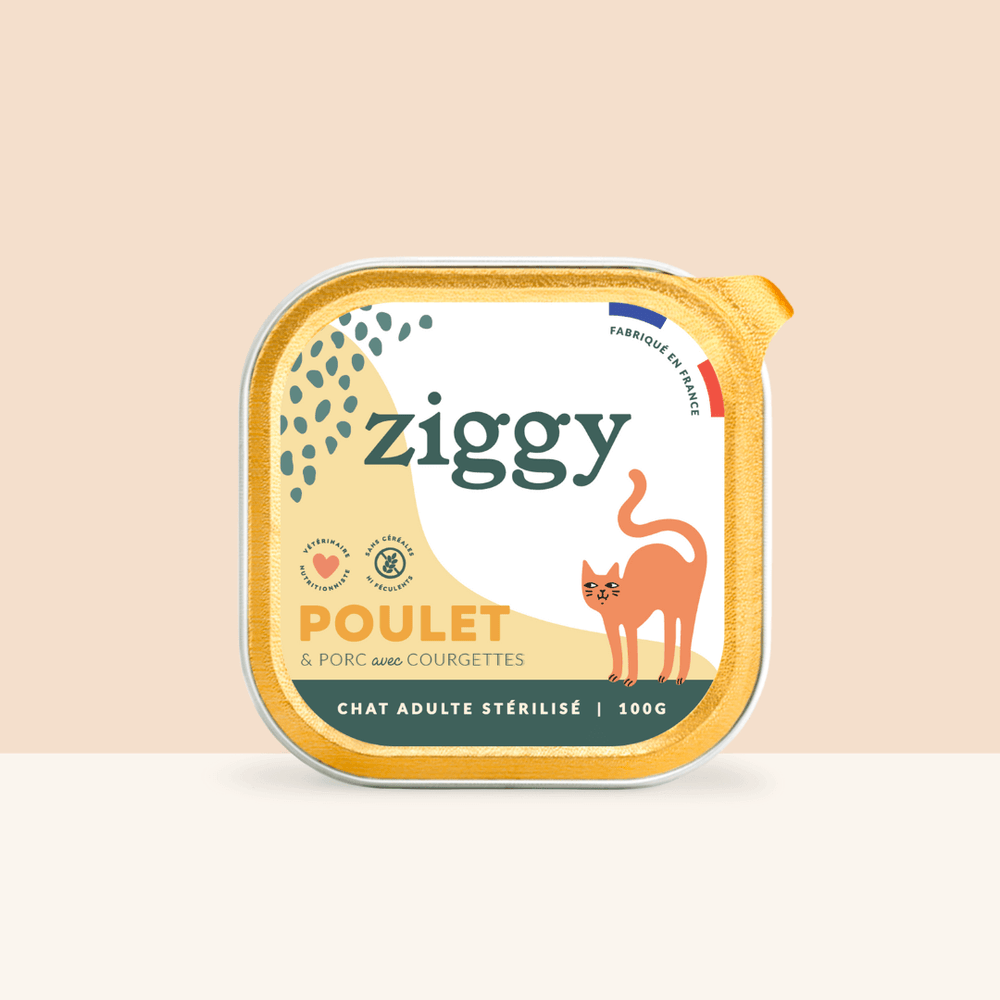
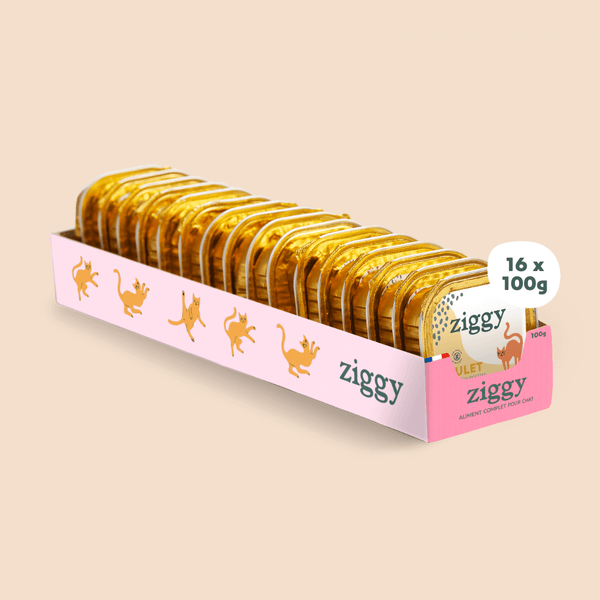
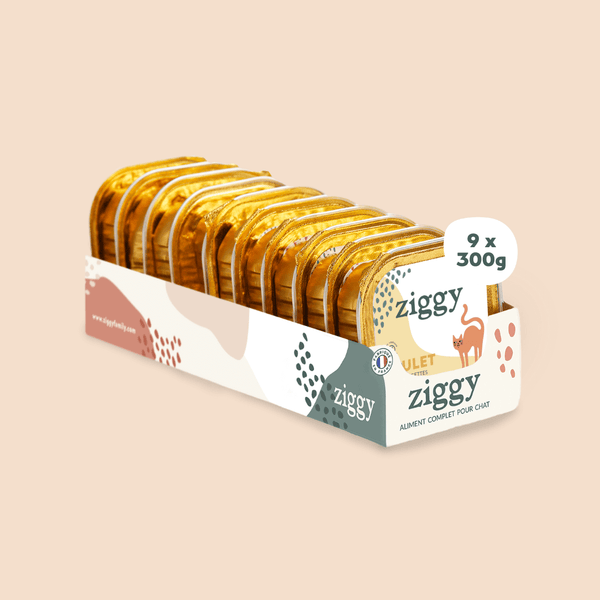

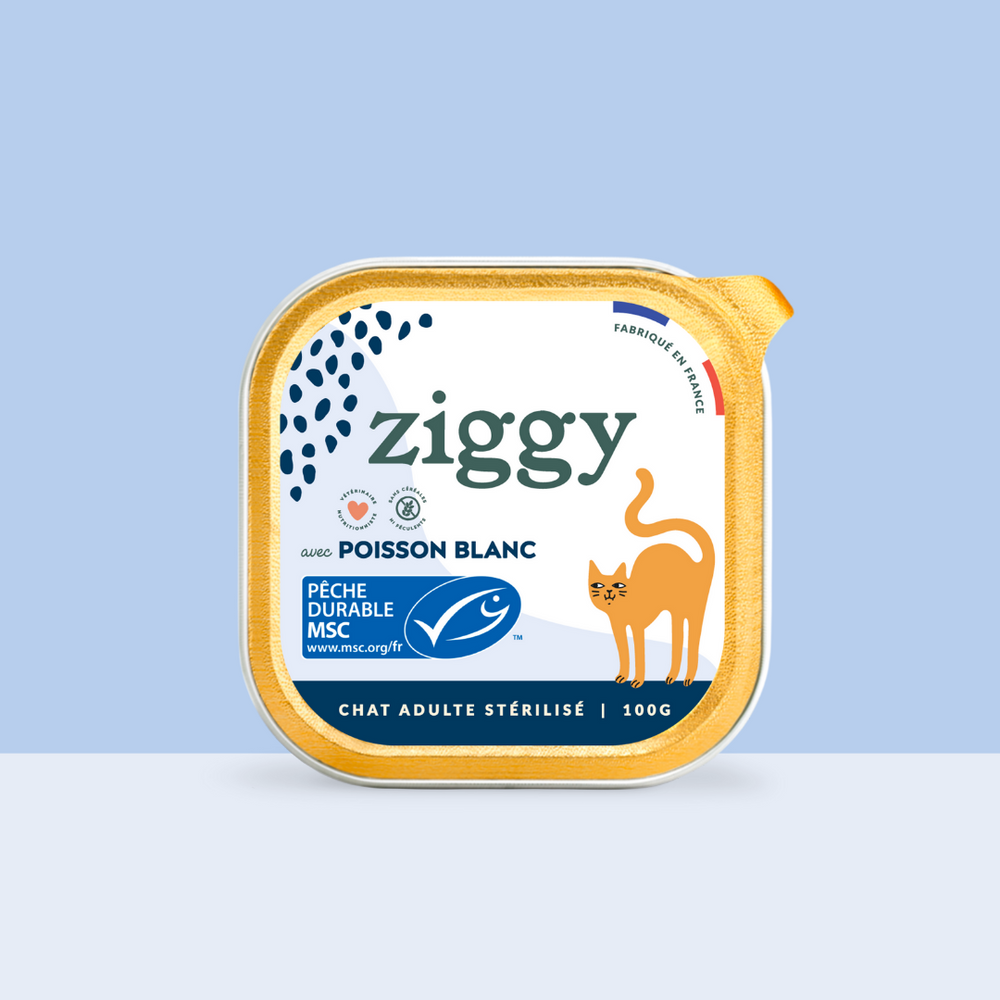
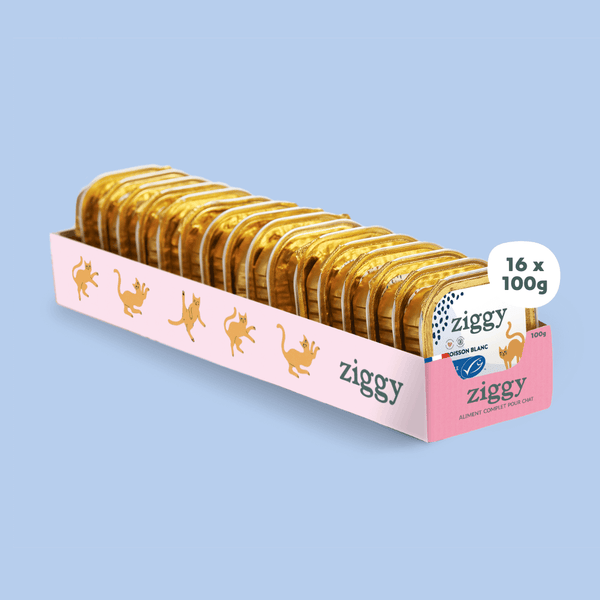
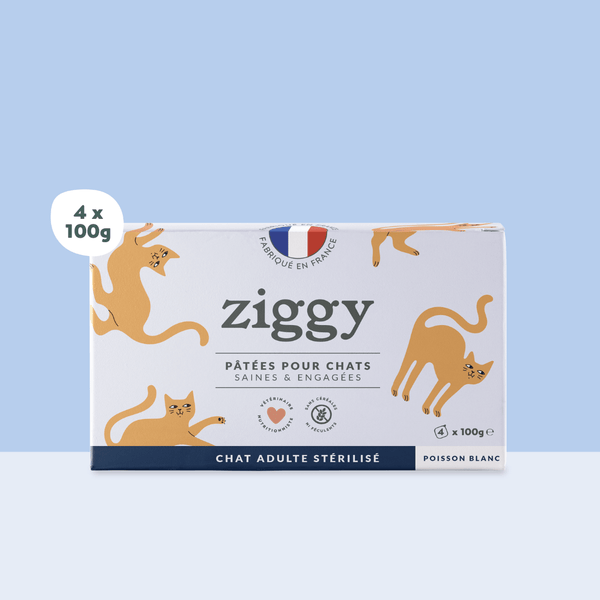
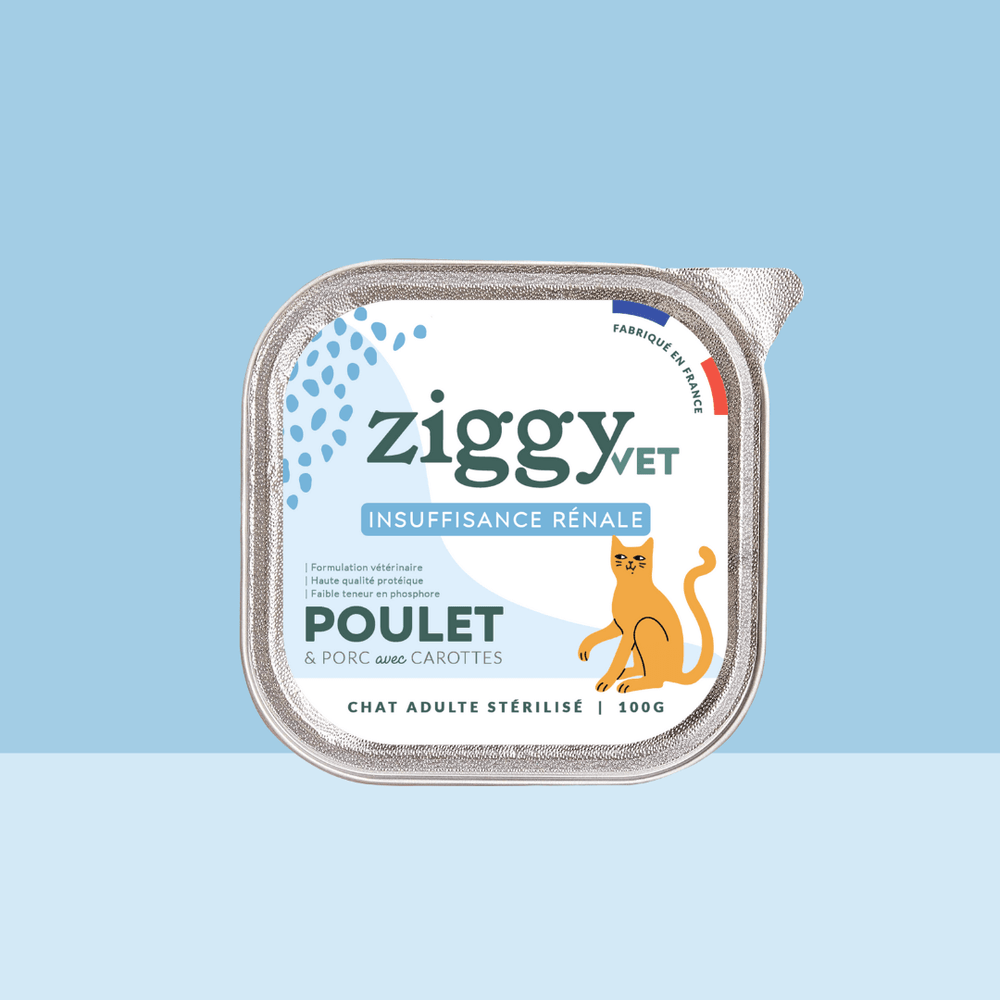
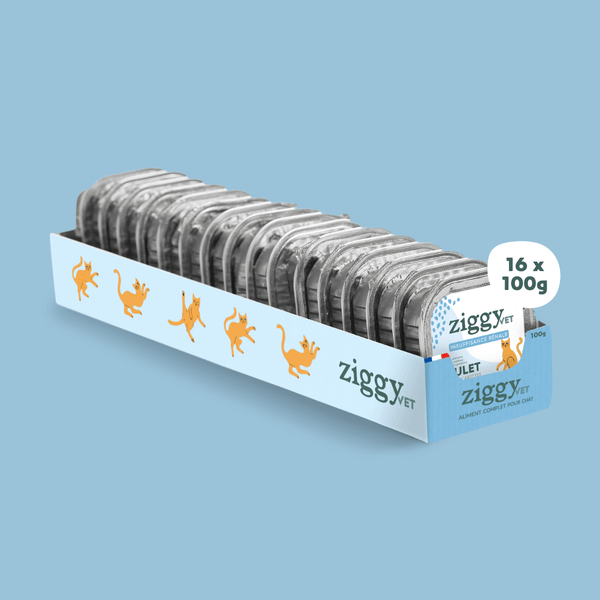
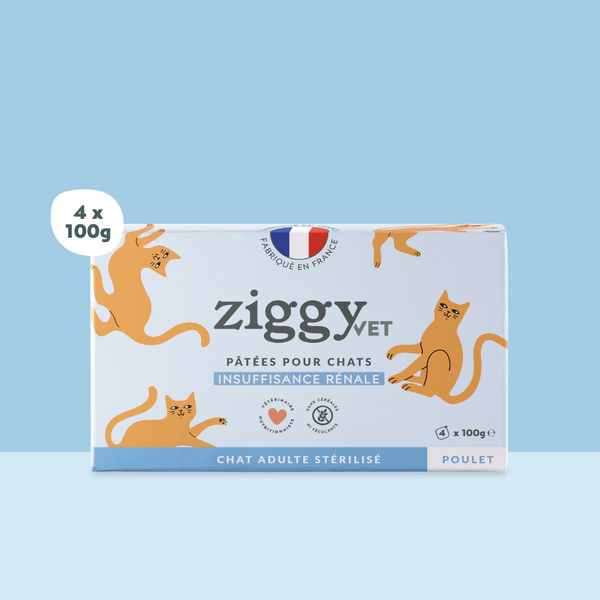
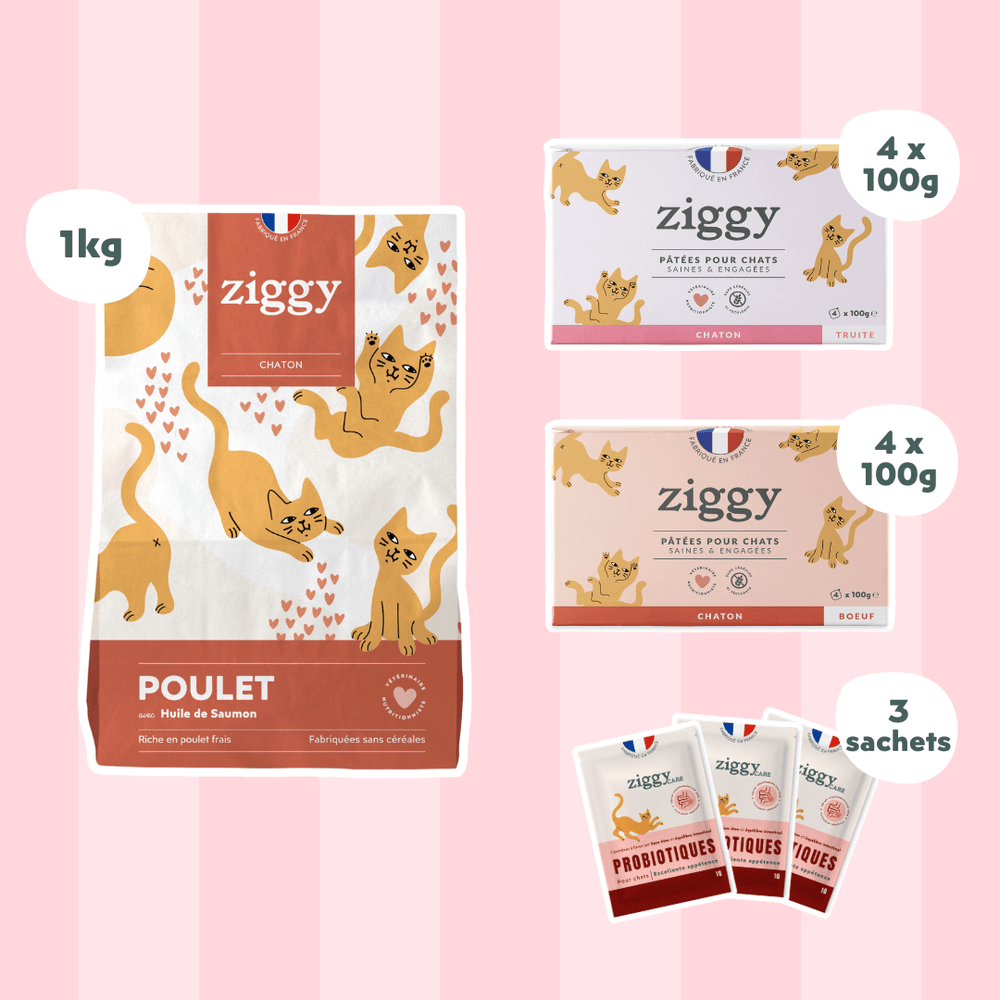
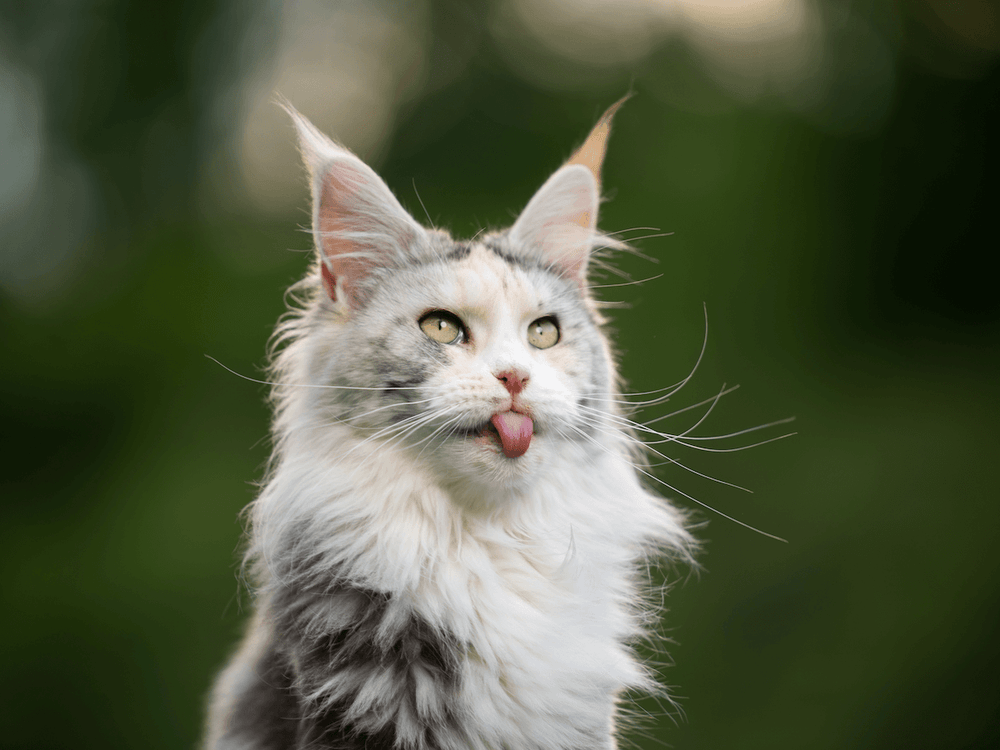
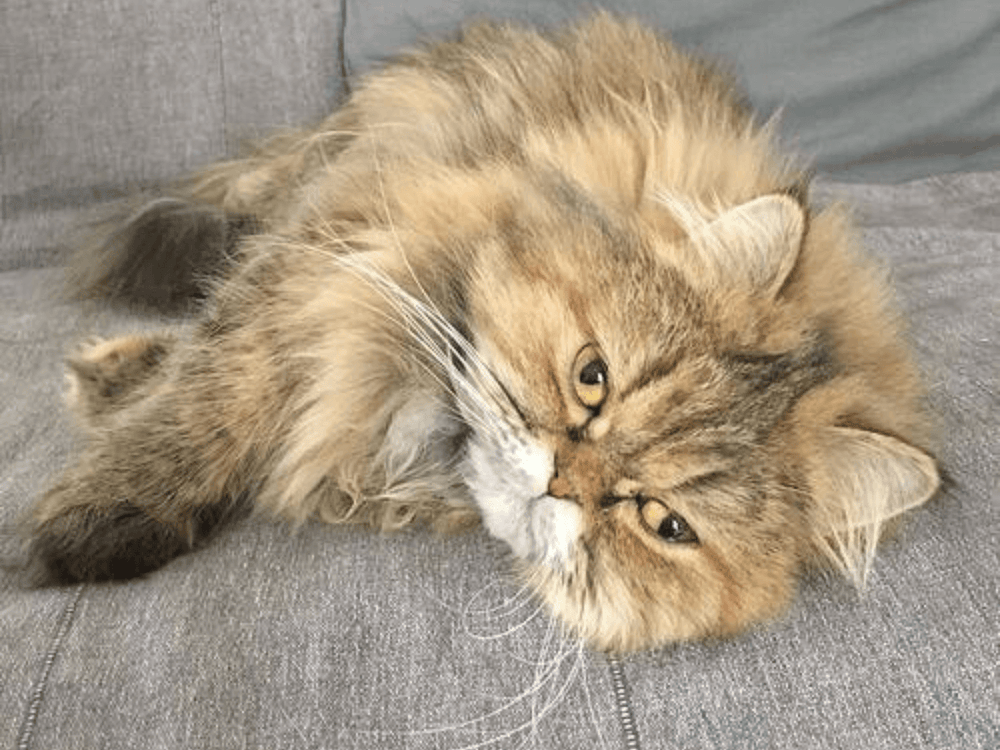
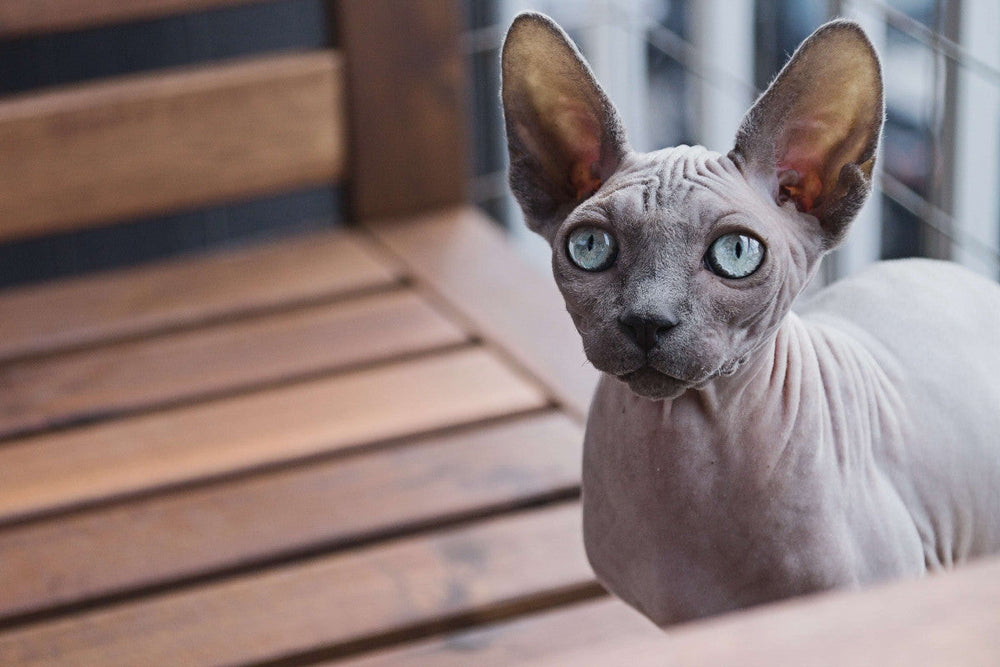
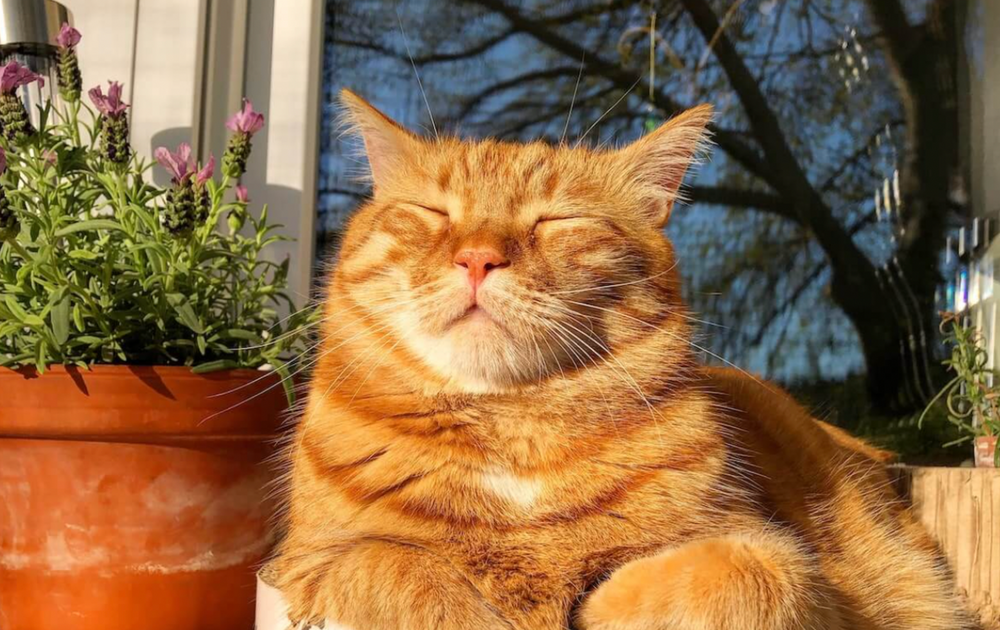

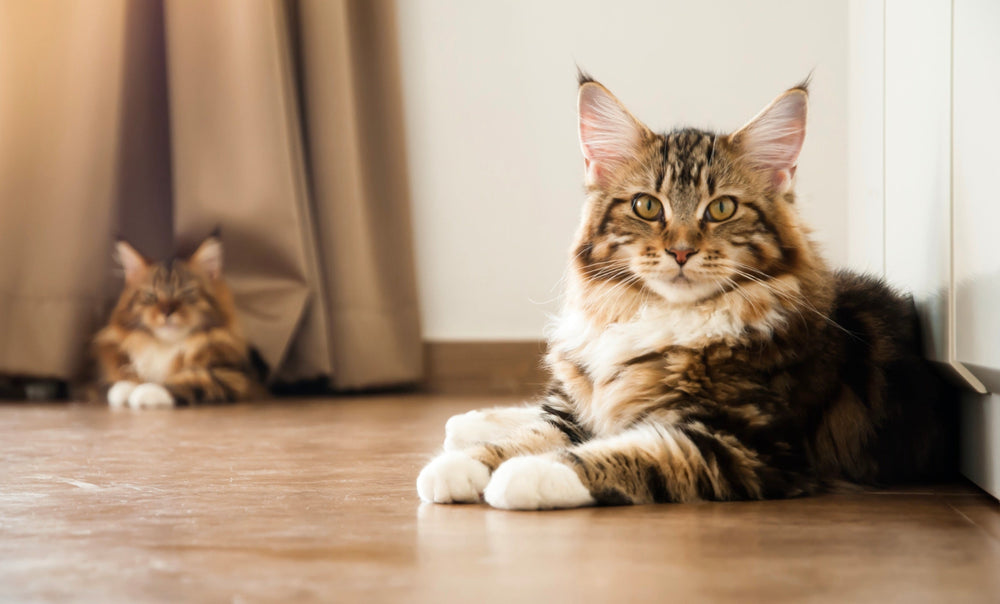
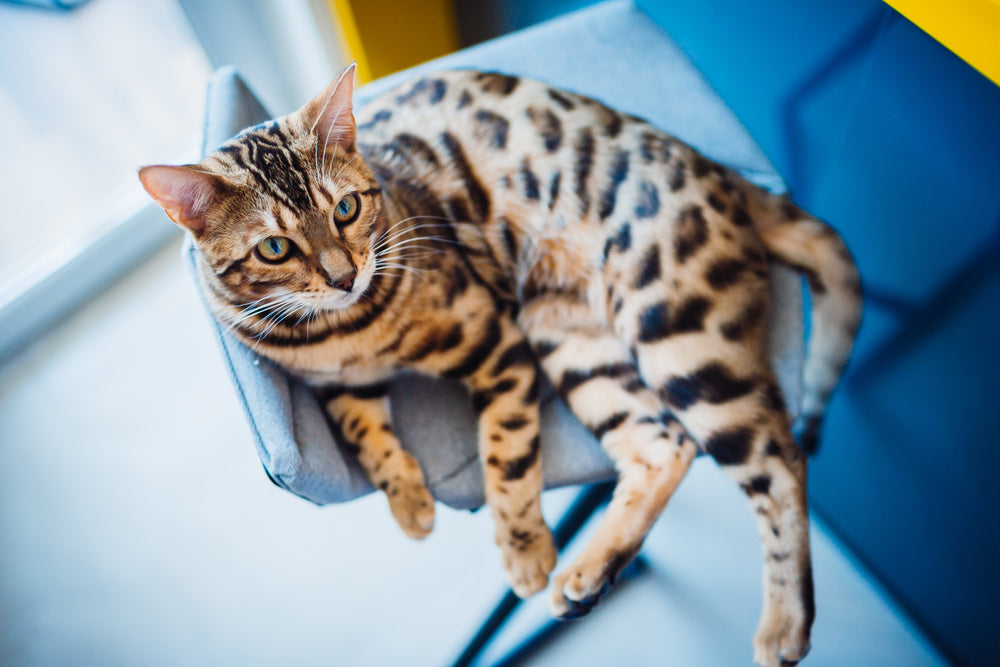
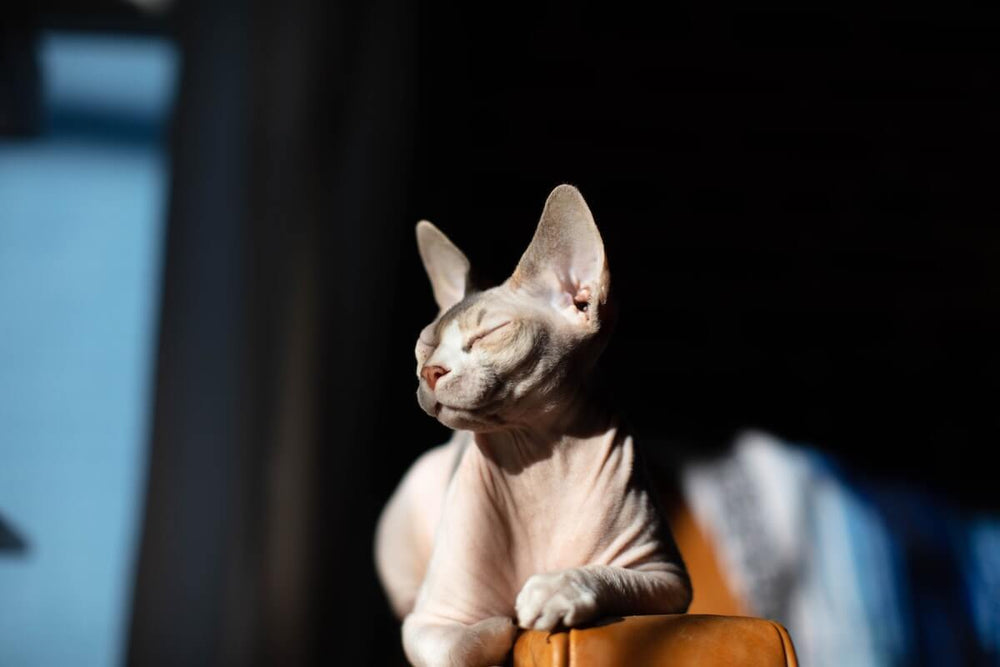
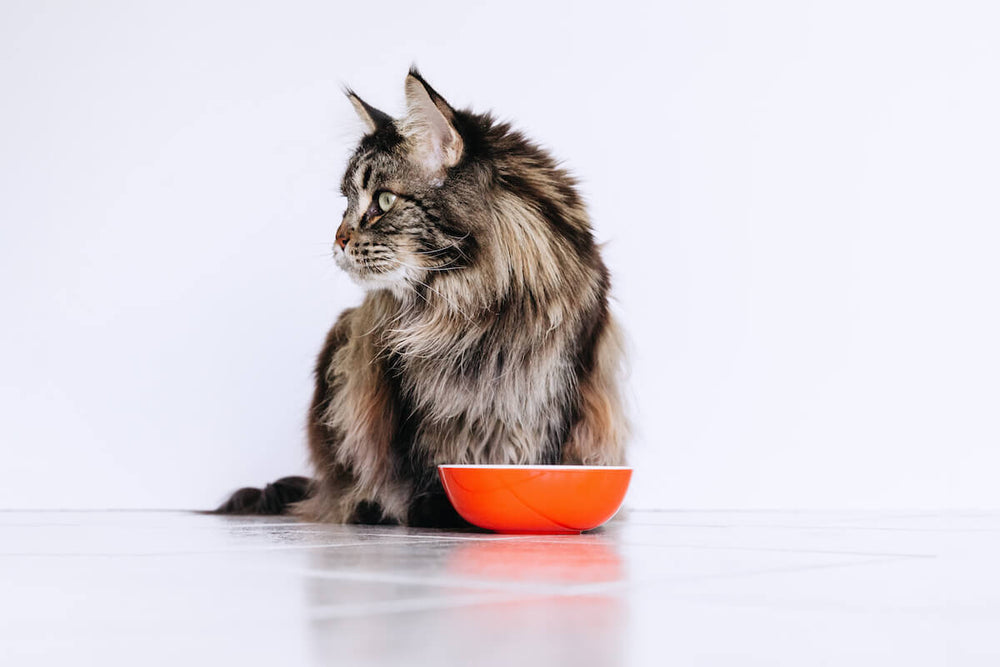
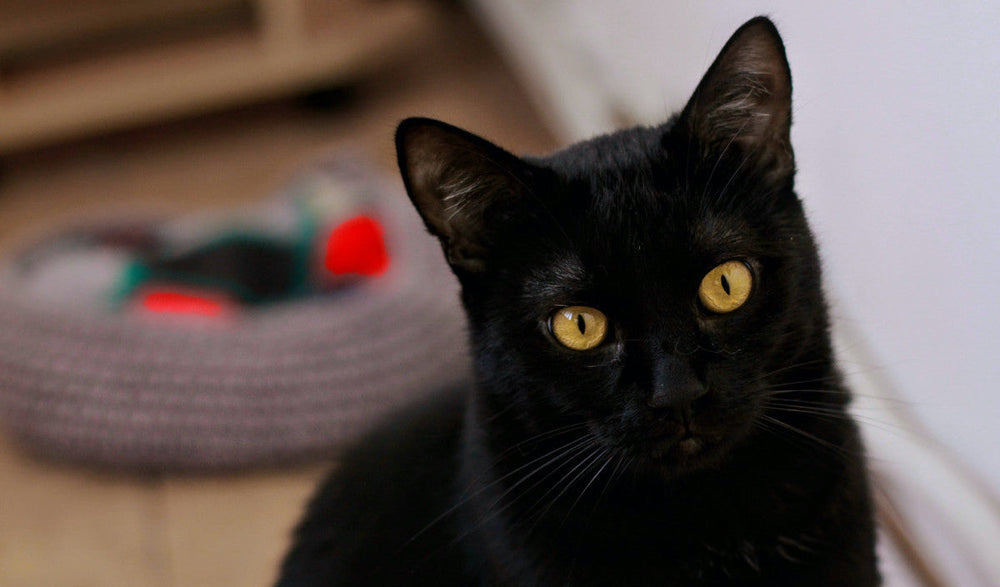
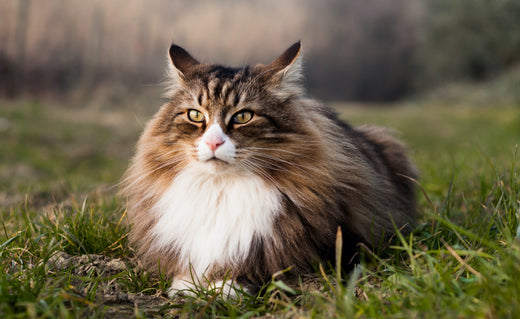
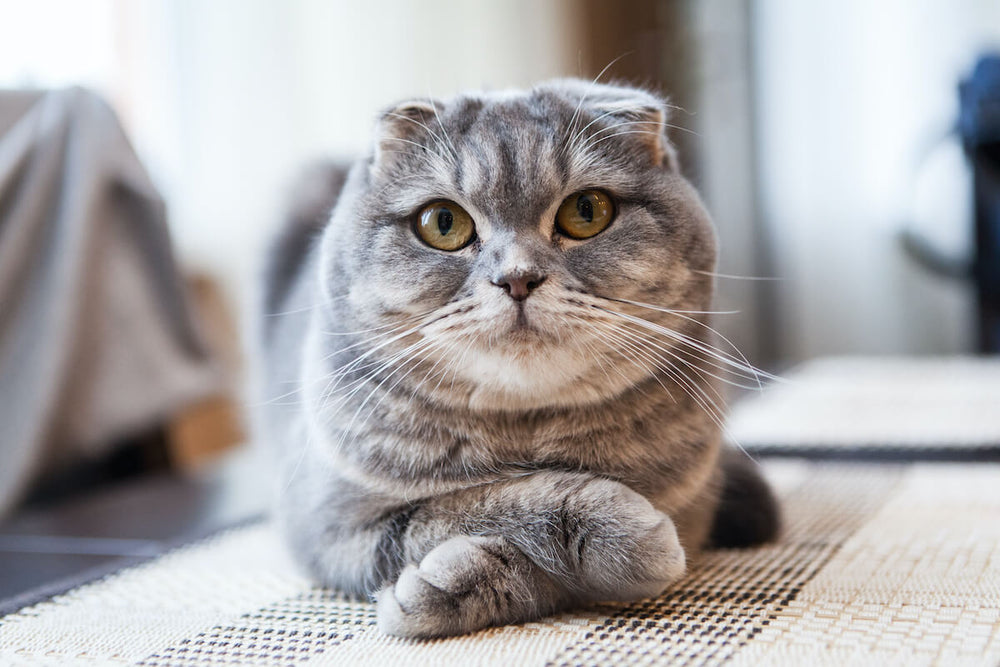
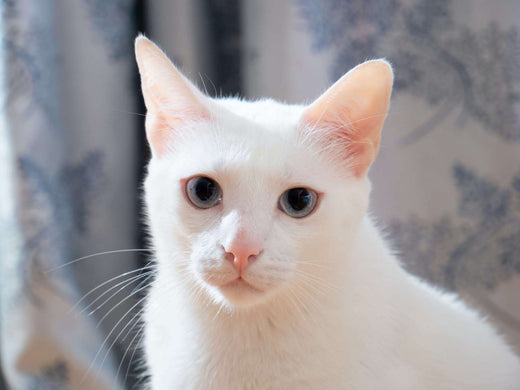
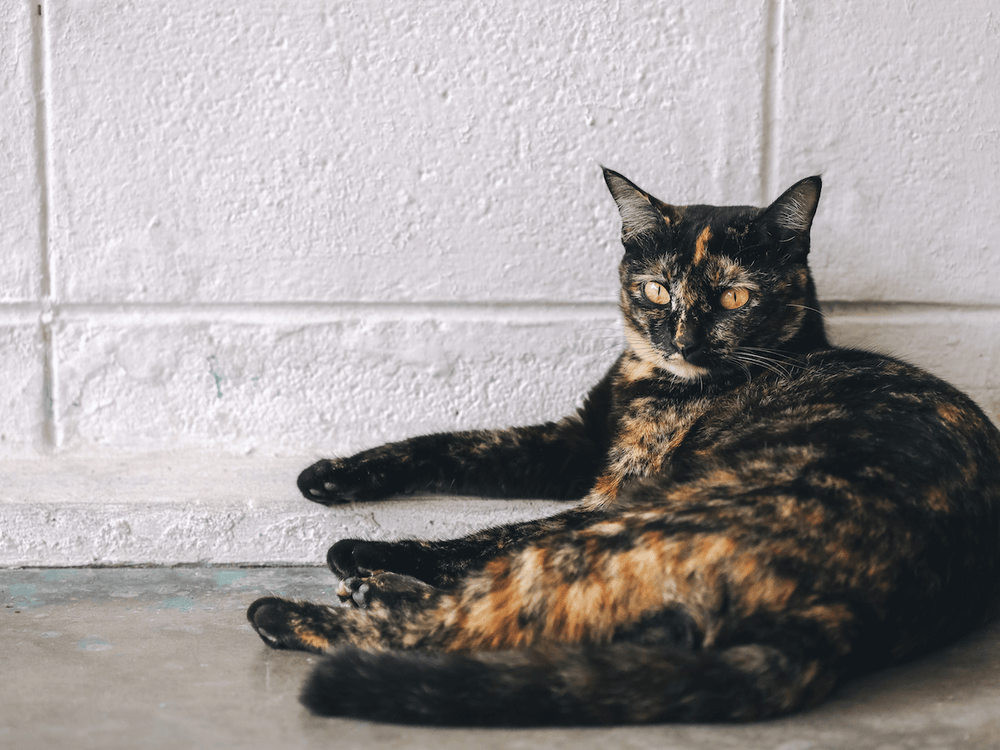
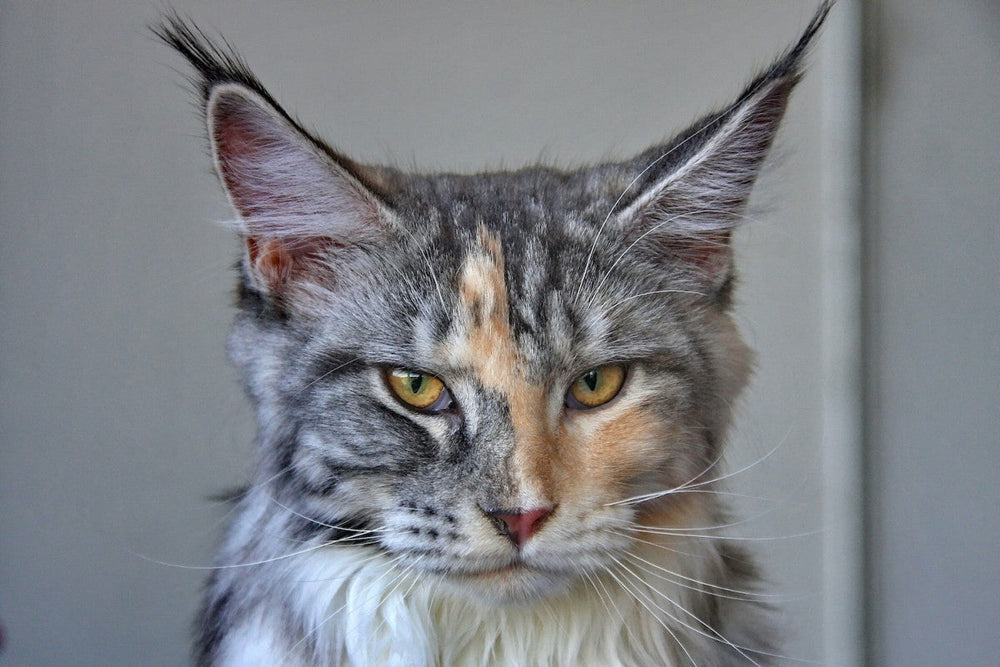
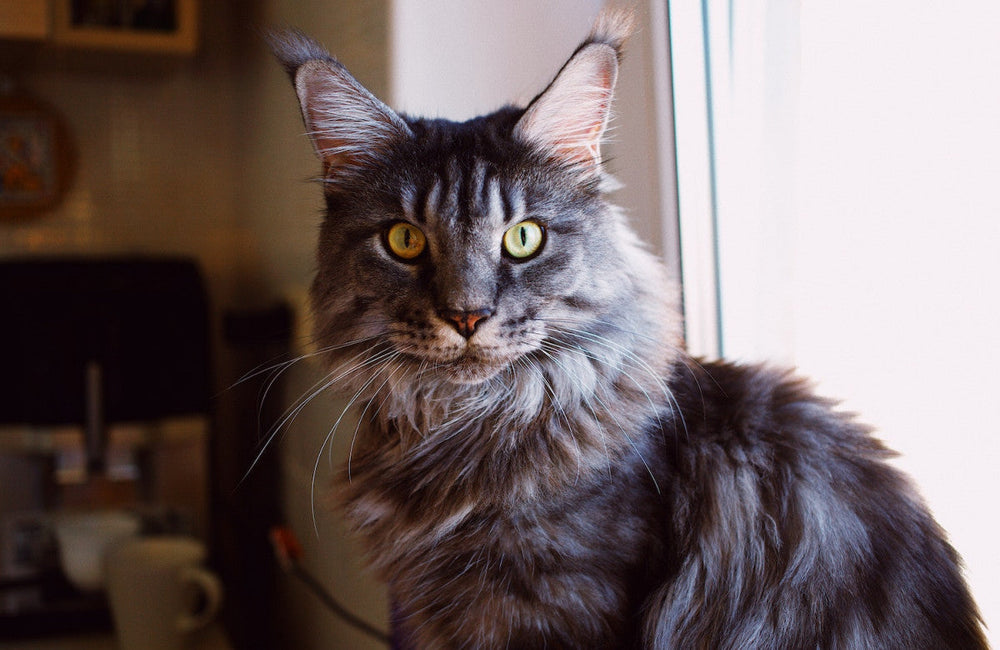


Bonjour,
Merci pour votre commentaire. 💛
Pour votre Sacré de Birmanie, on ne peut que vous conseiller de lui offrir nos pâtées pour chats seniors. Elles répondront parfaitement aux besoins de votre félin de 13 ans, tout en le régalant. Pour ses boules de poils et ses yeux, consultez votre vétérinaire pour vérifier que tout va bien. 🥺
Plein de caresses à votre moustachu.
L’équipe Ziggy 🐈
Bonjour
J’ai un sacré de birmanie âgé de 13 ans et demi
Je cherche à lui donner une alimentation plutôt humide vu son âge
Elle a du mal à régurgiter bien entendu ces boules de poils je trouve que ses yeux suintent souvent
Que me conseillez-vous pour son alimentation elle boude les croquettes sèches
Bonjour,
Merci pour votre commentaire. On espère que vous et votre petit Birman allez bien😻
Pour que votre moustachu soit en bonne santé, on vous recommande de privilégier une alimentation humide (pâtée) ou mixte (croquettes et pâtée), pauvre en glucides et riche en protéines de qualité. Notre gamme pour chats adultes lui conviendrait parfaitement. Nos pâtées et croquettes, qui sont élaborées par une vétérinaire nutritionniste, répondront parfaitement aux besoins nutritionnels de votre petit Sacré de Birmanie. Poil soyeux et forme olympique garantis 🌈😺
Bonjour
J ai un sacré de Birmanie magnifique de 17 mois je voudrai qu il garde la beauté de son pelage et qu il ne doit pas malade
Leave a comment